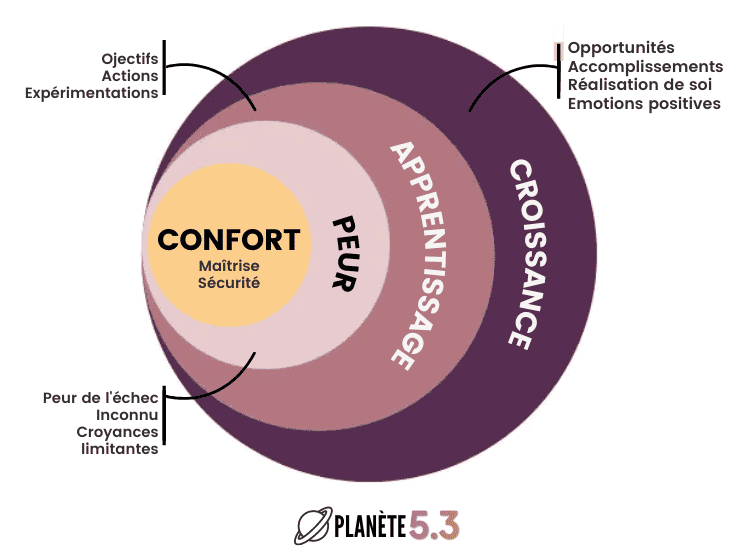
The new Peugeot 308 SW plays the card of a more daring style than the very classic one of the Golf 8 SW. But it is through their practicality, their driving pleasure and their price that two compact station wagons will seek to dominate each other.
Cars on test: Peugeot 308 SW vs Volkswagen Golf SW
| Peugeot 308 SW 1.2 PureTech 130 hp GT Pack EAT8 | |
|---|---|
|
€36,250 75 € penalty
|
| Volkswagen Golf SW 1.5 eTSI 150 hp R-Line DSG7 | |
|
€38,960 125 € penalty
|
Low glass surfaces, a sporty profile, a receding stern with sculpted shapes and a rebellious gaze exacerbated by the house lighting signature: the Peugeot 308 SW does its utmost to attract attention. Especially in its superb Blue Avatar launch livery which doesn’t forget to go green! The break version of the French compact first intends to please with its style before revealing its habitability.
This 308 SW also gives itself the means to seduce in the passenger compartment with its stretched length of 27 cm compared to the sedan, including 5.7 cm on the wheelbase. With 4.64 m long, the Peugeot station wagon suddenly displays the same length as the Volkswagen Golf 8 SW, another recent novelty in the compact station wagon segment. Less expressive than the French and even classic, the Golf SW is not outdone in terms of modernism and technology. It remains to decide between these two station wagons which are resisting the ever-increasing number of compact SUVs.
Price 308 SW and Golf SW

For this match, we have chosen the most powerful gasoline engines of each model and sporty finishes. The Peugeot 308 SW therefore comes in version 1.2 PureTech 130 EAT8 GT Pack at €36,250. It is displayed at €2,710 less than the Golf SW 1.5 eTSI 150 R-Line with more generous equipment (see table on next page) and a few bonuses such as the induction telephone charger billed at €520 at Volkswagen. Despite the absence of technologies such as Park Assist (€240), controlled damping (€860) or head-up display (€695).
The 308 wins the budget chapter hands down. but the Golf SW has for it a more comfortable power (150 instead of 130), a four-cylinder engine instead of three and a micro-hybridization system that the 308 cannot have. It remains to be seen whether the German justifies its flying extra cost and, in this budget battle, it is to be regretted. removal of the 130 hp 1.5 eTSI engine from the Golf 8 catalog since the beginning of 2022 because its tighter price brought it closer to the 308.
To drive

On paper, the four-cylinder petrol 1.5 of 150 hp of the Golf takes the advantage against the 130 hp of the small three-legged 1.2 of the Peugeot. In real life, its incredible discretion makes it much more useful in town than its additional 20 hp! Part of its secret lies in a 48 Volt hybridization which makes the operation of its stop & start system absolutely transparent. The engine cuts out when approaching a slowdown and restarts almost imperceptibly. The dual-clutch DSG gearbox which shifts gears smoothly helps to make its driver zen.
Devoid of light hybridization, the Peugeot 308 engine and gearbox assembly does not offer the same approval under these conditions. First, because the jerky purr specific to its small three-cylinder is a little more present in the cabin. Then because the hesitant stop & start system generates a few jerks when waking up the mechanics. Finally, because the eight-speed automatic transmission marks a response time during a low-speed revival. The Peugeot break makes up for it by its ability to filter out small imperfections in the coating at low speed, with more tact than the Volkswagen.

On long journeys, the additional tone and flexibility of the Volkswagen block at low revs make the difference. The DSG box sometimes lacks responsiveness, unless you opt for the not caricatural and more alert Sport mode to support dynamic driving on the road, and favors brilliant consumption. The 48 V hybridization, which allows some engine cuts while driving and provides electric assistance in low-speed revivals, helps to make the 1.5 eTSI more fuel-efficient than the Peugeot engine in real life..
Devoid of all its refinements and more rumbling on acceleration, the three-cylinder of the 308 does not demerit for all that. Its punch at mid-range and its gearbox more alert than in town guarantee sufficient performance, even under load. A few turns are enough to realize that the 308 retains that famous Peugeot road feel, even if its front axle is a little less sharp than before. The well-calibrated damping and the informative direction which subtly strengthens when the pace increases, allow the driver of the tricolor station wagon to have a good time behind the small steering wheel. The Golf seems a little heavier in comparison and its controls a tad less frank, especially in terms of regenerative braking. This does not prevent it from keeping pace with the 308 with its efficient and comfortable chassis.
To live
The 308 SW is entitled to the very latest generation of the i-cockpit. From the GT finish, it incorporates as standard a customizable 3D digital counter that is certainly ultra modern, but with graphics that are difficult to read. As always, the small steering wheel with limited range of adjustment often requires it to be installed too low so as not to encroach on the vision of the counters. Pity. The technological presentation, the stitching on the dashboard and the neat finish in GT Pack flatter the retina as much as the ego of the owner, even if it means paying into aesthetic one-upmanship. The new interface makes it necessary to go through the touch screen and take your eyes off the road to access the various functions of the vehicle. The presence of a few physical keys on the central console and a band offering six shortcut keys, directly nestled under the screen, try to arrange things a little, but it is still far from perfect.


By carrying out its digital revolution, the Golf encounters the same ergonomic problem as the 308. The disappearance of the physical controls involves navigating through the multiple menus and sub-menus of the touch screen to adjust all of the vehicle’s functions as desired. Hardly practical, the haptic steering wheel controls do not help. On the other hand, the central slab can count on slightly more polished graphics than those of the 308 and the instrumentation block is more readable. In addition, the driving position adapts more to all sizes, with a greater range of adjustments.
The rear seats of the 308 are rather pleasant and the seating of the central space is not as inhospitable as on board many other compacts. Despite a longer wheelbase compared to that of the sedan, the knee space is nothing exceptional and the over-tinted and fairly low glass surfaces can make the atmosphere oppressive. On board the Golf, passengers benefit from a brighter atmosphere and can stretch their legs more. The greater elbow width makes it easier for three people to travel, but the middle occupant must then deal with a large tunnel and a bench seat that is far too firm.


With a capacity manufacturer (measured in volume of water) of 611 l against 608 l in the 308 SW, the carrying capacity of the Golf SW only takes a symbolic advantage on paper. In real life, the gap widens further. On the tricolor, the double bottom does not cover the entire trunk like that of its rival. As a result, its more tortured forms with the floor in the low position make it less usable on a daily basis. Once the rear seatbacks have been folded down via pull tabs nestled in the trunk, the load space becomes flat in both cases, provided the removable floor has been installed in the high position.


Find the results of the match and the technical sheets compared on the next page…
















